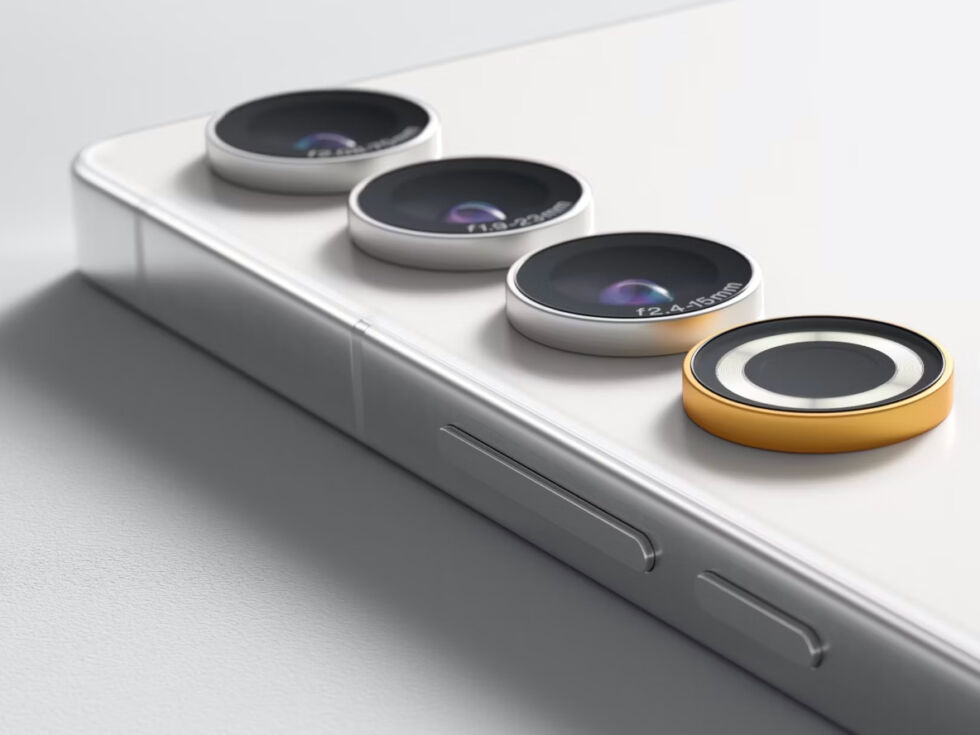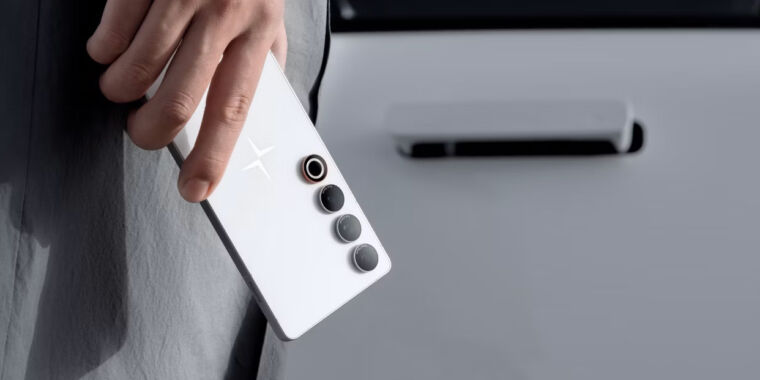-
The Polestar Phone. Someday it will unlock your Polestar car.
Polestar -
There are a few Polestar decorations, like the logo on the back and camera specs on each of the lenses.
Polestar -
There’s a side Polestar logo too.
Polestar -
The box. It comes with a charger.
Polestar -
The Polestar UI.
Polestar -
This is the “Polestar Link” picture. It looks like three of the phone’s home screen pages are now on the car display?
Polestar -
The Polestar Phone is perfect for watching videos about your Polestar car.
Polestar
Polestar, the Volvo offshoot EV company, has made a smartphone. It’s called, predictably, the Polestar Phone, and it’s only available in China. There have been a lot of car-brand smartphones out there (it’s often Lamborghini), but usually, these are licensing deals that the car company ignores. Polestar seems to be proud of this phone, though, making it a bit more involved than the usual car-brand licensing deal. Just look at the new navigation drawer on the polestar.cn site, which has four main items: “Polestar 2”, “Polestar 3”, “Polestar 4” and now “Polestar Phone.”
Why would a niche EV brand make a phone? Maybe all that work on the Android Automotive OS made Polestar’s engineers really enthusiastic about Android device development. The website, through machine translation, promises the phone was “jointly designed by the Polestar global design team and the Xingji Meizu team in Gothenburg, Sweden, and is decorated with Swedish gold details that symbolize high performance.” “Decorated” is probably the best way you could describe Polestar’s contributions to this phone since it seems to be a bog standard Meizu 21 Pro with some Polestar branding. It does look beautiful, with a no-nonsense minimal rectangular design and all-screen front, but the same can be said for the Meizu phone this is based on.
So, how exactly is the Polestar Phone related to a Polestar car? Well, both run Android and have all-electric power systems. The phone has a slightly smaller battery than the EV, at only 5,050 mAh (that’s something like 18 Wh) compared to the 100 kWh battery of something like a Polestar 4. The car also has the phone beat on-screen size, with the phone packing a pocketable 120 Hz 6.79-inch, 3192×1368 OLED, and the Polestars all sporting big tablet screens.

Polestar
A spec comparison is not a clean sweep for the cars, though. The sad thing about the state of the car infotainment market is that the computer in this ~$1,000 (7,388 yuan) phone is dramatically faster than what powers any of the infotainment systems in Polestar’s $50,000–$75,000 vehicles. The Polestar Phone ships with a Snapdragon 8 Gen 3 with 16GB of RAM and 1TB of storage. That’s a flagship mobile SoC from 2023 built on a 4 nm process. All the Polestar cars in the Google Play Developer console (which lists all Android devices in the world) are built around an Intel Atom A3960 SoC. This is an absolutely ancient, bottom-of-the-barrel 14 nm x86 desktop CPU released around 2016. This chip was bad eight years ago when it came out, yet is still shipping today. The cars all have 4GB or 8GB of RAM, and the Polestar 2 I looked at had 128GB of storage, all clear wins for the phone spec sheet.
The Polestar Phone and Polestar Car (specifically, the Polestar 4) will talk to each other. Polestar promises that someday the phone will support Android’s digital car key functionality, but not at launch. The Polestar Phone’s “Polestar UI” promises a “rich application icon design [that] is consistent with the Polestar OS in the car.” Something called “Polestar Link” apparently lets you see multiple pages of the phone’s home screen on the big car tablet display, and it sounds like maybe apps will float between the two devices? It’s hard to know too many details because 1) there just haven’t been that many details published yet, and 2) the details that exist are all in Chinese.
There is a chance this phone will be sold outside of China. Like the cars, it is on the Google Play Dev Console, and since there is no Google Play in China, the phone’s registration with Google suggests a plan for international sales.
Listing image by Polestar

